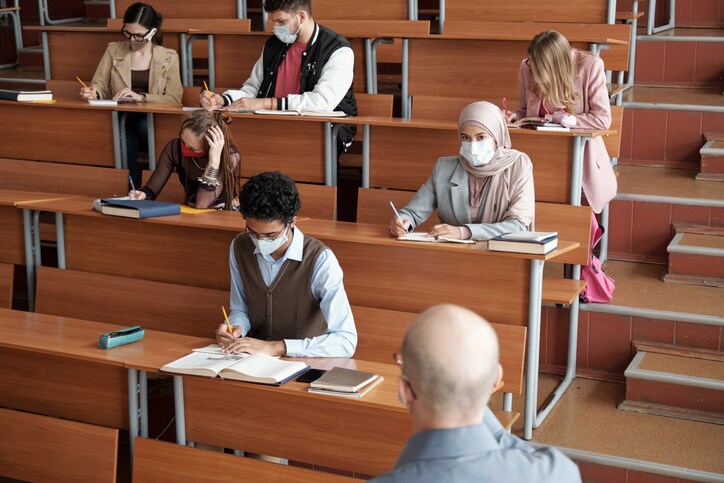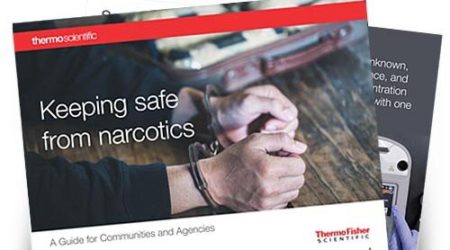 There are various metrics available for tracking the ongoing impact of the COVID-19 pandemic on businesses, but it is much harder to quantify the upheaval to education. Every level of the school system has experienced severe disruption since March 11, 2020. Risk assessments recommended widespread school closures and a pivot to online teaching, which was an invaluable alternative to ceasing education altogether, but doubtless lacked the quality of face-to-face interactions between students and educators. There is also an ongoing crisis of staff shortages creating an unfavourable ratio of students to teachers. The only solution to this is to combine classes, which makes it difficult to give each and every pupil the attention they deserve. A multi-layered action plan was needed to safely reopen schools and college campuses.
There are various metrics available for tracking the ongoing impact of the COVID-19 pandemic on businesses, but it is much harder to quantify the upheaval to education. Every level of the school system has experienced severe disruption since March 11, 2020. Risk assessments recommended widespread school closures and a pivot to online teaching, which was an invaluable alternative to ceasing education altogether, but doubtless lacked the quality of face-to-face interactions between students and educators. There is also an ongoing crisis of staff shortages creating an unfavourable ratio of students to teachers. The only solution to this is to combine classes, which makes it difficult to give each and every pupil the attention they deserve. A multi-layered action plan was needed to safely reopen schools and college campuses.
The challenge facing decision makers on education boards and faculty teams going forward will be what COVID-19 mitigation strategies to maintain, strengthen or put in place. Fortunately, in-air pathogen surveillance paired with PCR testing has emerged as an ideal solution for COVID-19 detection in schools. It can provide actionable insights that help improve safety protocols on campuses, shoring-up the decision-making process on COVID-19 mitigation.
So, where does air surveillance fit into typical SARS-CoV-2 risk mitigation strategies, and how can it help to ensure operation continuity in learning environments?
Typical approach to COVID-19 mitigation on campus
Measures like mask mandates and social distancing are relatively easy to implement, and are subsequently counted among the first layers of defense against viruses like SARS-CoV-2. But the efficacy of these alone is not enough to stem the spread of COVID-19 in busy indoor spaces. Screening tests go a long way to reducing the likelihood of transmission on campus by identifying unknown cases; however, certain variants have proven more contagious than others (i.e. Omicron), thus they may transmit more easily in the busy confines of a school or college campus.
Over 260,000 cases were linked to American colleges and universities in the spring semester of 2021. Such rampant transmission could have put an untenable strain on US healthcare institutions, but vaccines have proven effective at preventing severe infections and have helped to somewhat curb the rate of transmission.
These are the four main pillars of COVID-19 detection and mitigation strategies to date: mask-wearing; social distancing; individual testing; and vaccinating. But the pandemic is a dynamic situation, which continues to pose issues in terms of operation continuity. How can educators provide a high-quality teaching experience while facing routine absences due to mandatory isolation periods? Likewise, how can students be expected to feel safe on campus when much of the burden of COVID-19 risk mitigation is placed on their shoulders?
Environmental surveillance is the missing layer which can bring confidence back to school. There are several forms of environmental surveillance for virus detection, but the focus here is on in-air pathogen surveillance.
How pathogen detection impacts public safety in schools
In-air pathogen surveillance combines air sampling with PCR testing to identify pathogens in indoor spaces. There is air sampling technology now available that acquires particles from the air over a period of a few hours, adhering them to a collection substrate. After the sampling process, the substrate is removed and PCR tested. Results can be acquired rapidly, providing fast insights into the presence of SARS-CoV-2 pathogens; wherever, the sampler is positioned (classrooms, corridors, dormitories, lecture halls, etc.). Until recently, turnaround times of 24 hours were deemed exceptional. The latest environmental PCR tools cut out the need to deliver samples to offsite testing facilities, bringing the entire sampling and testing workflow onsite. After sampling, you can access your sample results in as little as 30 minutes.
This can provide complementary information for a multi-layered approach to COVID-19 detection and mitigation, helping users to validate, or to adjust, their safety protocols as required.
Read more about in-air pathogen surveillance in schools, and how air sampling paired with PCR testing can increase confidence among students and educators alike.
Source:
https://www.nytimes.com/interactive/2021/us/college-covid-tracker.html





Leave a Reply